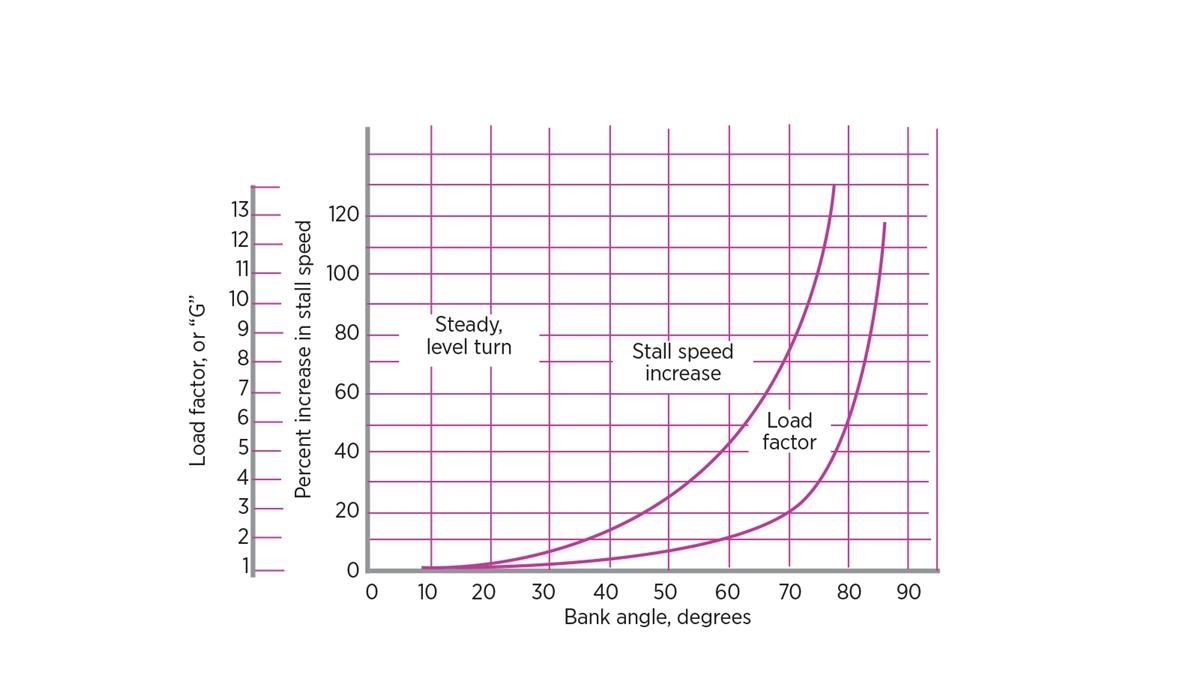The Right Formula
A prescription for effective spin-avoidance and loss-of-control training
By Bruce Williams
Year after year, low-altitude loss-of-control accidents remain on the NTSB’s “most wanted” list. The most common type of loss-of-control accident is an aerodynamic stall, including stalls that lead to spins. Determining why such accidents—usually fatal—occur so regularly, and agreeing on the most effective ways to avoid them in the future, have proven difficult issues for the aviation community to resolve.
 To prevent unintended departures from flight and to better manage stalls, pilots need more training and a better awareness of the technologies that can help prevent these tragedies. Better training on how to eliminate distraction, avoid stalls, and manage weather issues will put pilots back in control and give them better command of their outcomes.
To prevent unintended departures from flight and to better manage stalls, pilots need more training and a better awareness of the technologies that can help prevent these tragedies. Better training on how to eliminate distraction, avoid stalls, and manage weather issues will put pilots back in control and give them better command of their outcomes.
The latest NTSB report on loss of control cites data from 2008 to 2014 confirming that nearly 48 percent of all fatal fixed-wing GA accidents were caused by loss of control in flight. And year after year, the GA community receives the same general recommendations to prevent these types of accidents. Among other points, the latest NTSB plea urges pilots to take these actions:
- Understand stall characteristics and warning signs, and be able to apply appropriate recovery techniques before stall onset.
- Manage distractions.
- Obtain training in emergency response skills so it is more natural to apply those skills in an emergency.
That’s commendable advice. But how does it translate into specific, effective training? In training, the stall is a deliberate, familiar maneuver at a safe altitude that typically develops over a minute or two. You prepare the airplane for a stall by clearing the area, performing a premaneuver checklist, and setting a specific power and configuration. You deliberately slow the aircraft and apply back-pressure on the elevator control to establish and then hold the nose at a pitch attitude—usually above the horizon—to induce the stall. Then you wait for the stall to develop. At the stall break or indication of the stall, as briefed, you recover by reducing angle of attack; smoothly applying coordinated rudder and aileron inputs to correct the aircraft’s attitude; and adding power to return to the specified heading, altitude, and airspeed.
The stall itself—the moment when the angle of attack exceeds the wing’s critical angle of attack—may surprise you, but the general sequence of events and the airplane’s behavior during the maneuver are parts of a routine that you can anticipate.
In other words, training stalls aren’t like the stalls that cause accidents.
Of course, we need practical methods for teaching pilots about stalls. The procedures must be safe and appropriate for a variety of aircraft. Instructors and examiners also must have clear regulatory and industry standards for training and evaluating pilots.

And training stalls are valuable experiences. They introduce and acclimate pilots to the in-cockpit cues associated with stalls, such as the changing sounds of the slipstream, reduced control effectiveness, and buffeting. Repeated practice helps pilots learn how to use the flight and power controls to recover from stalls and to respect the hazards of uncoordinated flight at high angles of attack.
Accelerated and cross-controlled stalls introduce pilots to more abrupt stalls, where the familiar signs of a typical training stall can be easy to miss. But these maneuvers are required tasks only for commercial pilot or flight instructor applicants, and they are still planned events that follow a clearly defined procedure.
The accident record and the NTSB’s repeated appeals attest that conventional stall-spin instruction doesn’t address several key elements involved in stall-spin and loss-of-control events, especially:
- The sights and sensations presented as an aircraft approaches an unanticipated upset/stall-spin departure from controlled flight, such as a stall during a skidding turn.
- The disorienting, extreme attitudes associated with most upsets.
- And—perhaps most important—the startle factor associated with a sudden loss of control, which delays reactions or stimulates incorrect responses.
The FAA’s latest attempts to address these issues include revised slow-flight and stall tasks in the airman certification standards (ACS) for the private pilot certificate and a rewritten Chapter 4 in the latest edition of the Airplane Flying Handbook. But like the NTSB’s recommendations, the Airplane Flying Handbook doesn’t describe specific training tasks (other than a spiral dive recovery procedure) to help pilots learn about, anticipate, and react correctly to stall-spin and loss-of-control events.
So, what’s my proposal to address the NTSB’s recommendations? First, I’m not calling for an overhaul of the basic private pilot syllabus or the testing standards. Good flight instructors always go beyond preparing their students to fly only the tasks described in the ACS. And there’s a lot of documented doubt on the value of classic spin training and spin demonstrations, which the Civil Aeronautics Authority (now the FAA) dropped from practical tests in 1949.
Instead, pilots and instructors should approach loss-of-control and spin-avoidance training as an opportunity to explore flight beyond the basic requirements, much like earning a tailwheel endorsement or glider rating. We also need to clearly define spin training, or adopt a better term: spin-avoidance training.
Just as typical training stalls don’t prepare you for the stalls that occur in the “real world,” performing a series of intentional, multiturn spins is only one part of effective spin-avoidance training. Intentional spins, like training stalls, are planned maneuvers that follow a script and take time to develop. Most so-called stall-spin accidents involve unexpected incipient spins.
To borrow again from the NTSB, the general goals of spin-avoidance training are to develop an awareness of how to avoid stalls and spins; learn proper recovery techniques; and explore the flight envelope.
To achieve those goals, a loss of control/spin-avoidance syllabus should emphasize a variety of unusual stalls, basic aerobatics, and spin avoidance and recovery.

 Flying basic aerobatics before progressing to aggravated stalls and spins helps acclimate you to extreme attitudes, inverted flight, and a range of G forces. The goal isn’t to become proficient in aerobatics—that’s another syllabus. Instead, rolls and loops—smooth, deliberate maneuvers flown with the airplane always under control—prepare you for the disorienting sights and sensations that you’ll experience later during sudden departures from controlled flight, reducing the likelihood that you’ll freeze or react incorrectly. Think of these exercises as enhanced versions of advanced proficiency maneuvers like chandelles and lazy 8s.
Flying basic aerobatics before progressing to aggravated stalls and spins helps acclimate you to extreme attitudes, inverted flight, and a range of G forces. The goal isn’t to become proficient in aerobatics—that’s another syllabus. Instead, rolls and loops—smooth, deliberate maneuvers flown with the airplane always under control—prepare you for the disorienting sights and sensations that you’ll experience later during sudden departures from controlled flight, reducing the likelihood that you’ll freeze or react incorrectly. Think of these exercises as enhanced versions of advanced proficiency maneuvers like chandelles and lazy 8s.
Basic aerobatics also help you develop G awareness beyond the two G associated with a level, 60-degree bank turn, the most strenuous maneuver you experience in normal flight training. Developing a feel for how many Gs you can pull while remaining within the Normal-category flight envelope is a critical skill, especially when recovering from upsets that involve nose-low attitudes with rapidly increasing airspeed.
Looping maneuvers also reveal the true implications of the mantra we all learn about stalling at “any attitude and at any airspeed.” A classic loop (a vertical turn) proves that you can fly through 360 degrees of pitch, and from high-cruise speed to well below VS0, without stalling. But pull too hard at any point in the maneuver and you’ll stall, even when flying well inside the green arc and accelerating straight down. Indeed, all the maneuvers in an effective spin-avoidance course that result in a stall include an increasing load factor—caused by you pulling on the yoke or stick.
In fact, experiencing the effects of increasing load factor is the most valuable single lesson most pilots learn during effective spin-avoidance training, because it clarifies another, often-misunderstood maxim about stalls: the relationship between stall speed and bank angle.
Every basic flying handbook, including the Pilot’s Handbook of Aeronautical Knowledge, includes a diagram that shows the exponential increase in stall speed associated with bank angle. But bank angle itself isn’t the culprit. As the notes—too often overlooked—for the diagram point out, the graph is predicated on a level turn, and it is load factor that drives the increase in stall speed.
To confirm this point, trim your airplane for wings-level flight at the final approach speed recommended in the airplane flight manual. Using only a couple of fingers on the yoke or stick, smoothly roll into a bank of at least 30 degrees. Don’t pull or push. The airplane doesn’t stall—or even nibble at the stall—unless you apply back-pressure on the yoke or stick. Instead, the nose drops, and the airplane, trying to maintain its trimmed speed, enters a descending spiral. To make the wing stall, you must increase the angle of attack by pulling on the yoke or stick, and pulling also would increase the load factor. Recover by reducing angle of attack and rolling the wings level. The nose will come up as the bank shallows. In some airplanes, you might need to hold forward pressure on the elevator control to prevent the nose from rising too aggressively.
It’s important to understand that increasing bank angle alone doesn’t lead to a rapid rise in stall speed.
If you have benefited from spin-avoidance training, you’ll react immediately if you sense the load factor build—regardless of bank angle or airspeed—by unloading the wing. And if you unload the wing—even if you’re a bit sloppy with the rudder or inadvertently bank too steeply in the turn—you won’t stall. And if you don’t stall, you won’t spin.
More important, you’ll promptly begin a go-around from that unstable approach, and you’ll know from direct experience why that decision is to be respected.
Bruce Williams is a flight instructor, writer, and aviation consultant. www.bruceair.com


